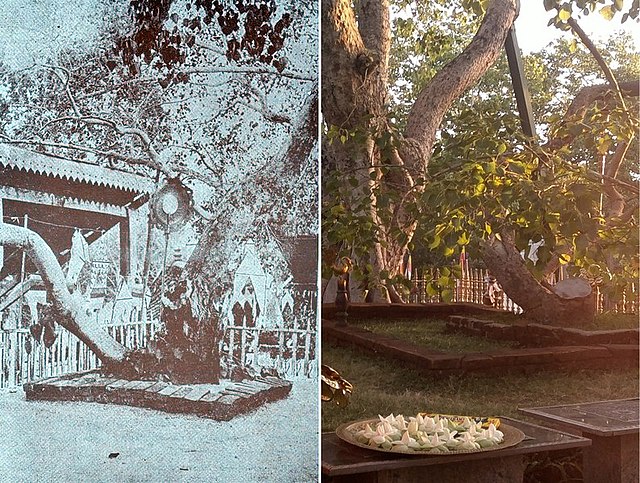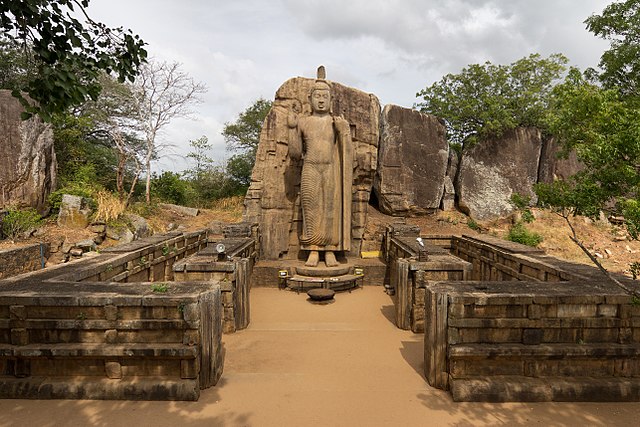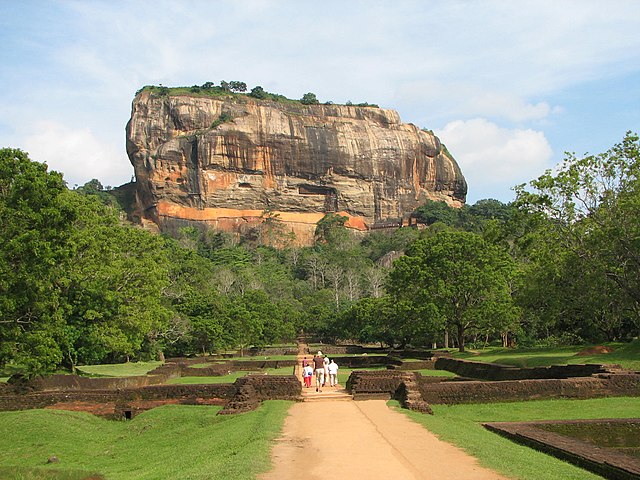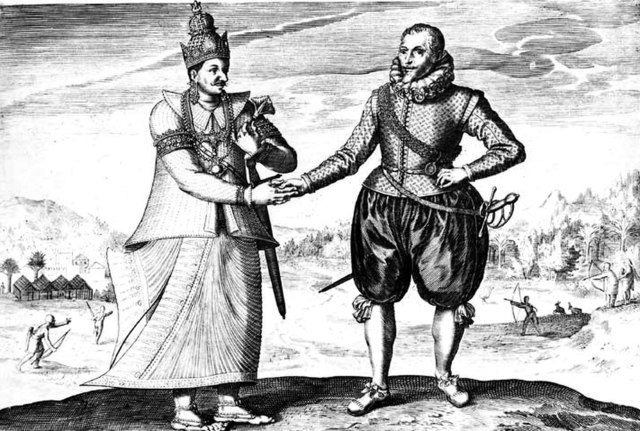Anuradhapura Kingdom, named for its capital city, was the second established kingdom in ancient Sri Lanka related to the Sinhalese people. According to the Mahāvaṃsa, it was founded by King Pandukabhaya in 437 BC, whose authority extended throughout the country.
The Jaya Sri Maha Bodhi today, to which the Kingdom was offered by Devanampiya Tissa.
Ambassador from Sri Lanka (獅子國 Shiziguo) to China (Liang dynasty), Wanghuitu (王会图), circa 650 CE
Ancient coins belonging to the Anuradhapura period on display at the museum of Anuradhapura.
Bronze imitation of a Roman coin, Sri Lanka, 4th-8th century
Sri Lanka, historically known as Ceylon and officially the Democratic Socialist Republic of Sri Lanka, is an island country in South Asia. It lies in the Indian Ocean, southwest of the Bay of Bengal, separated from the Indian peninsula by the Gulf of Mannar and the Palk Strait. It shares a maritime border with the Maldives in the southwest and India in the northwest.
The Avukana Buddha statue, a 12-metre-tall (39 ft) standing Buddha statue from the reign of Dhatusena of Anuradhapura, 5th century
The Sigiriya ("Lion Rock"), a rock fortress and city, built by King Kashyapa (477–495 CE) as a new more defensible capital. It was also used as a Buddhist monastery after the capital was moved back to Anuradhapura.
The seated image of Gal Vihara in Polonnaruwa, 12th century, which depicts the dhyana mudra, shows signs of Mahayana influence.
A 17th-century engraving of Dutch explorer Joris van Spilbergen meeting with King Vimaladharmasuriya in 1602








